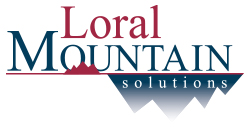Organizational Leadership Consulting
Super successful businesses are not only smart but healthy. As a matter of fact, “Organizational health is the single greatest competitive advantage in any business” according to Patrick Lencioni, best-selling author, leadership consultant, and founder of Table Group. Based on my career in the US Army, so much of our success was because we pursued the critical tasks highlighted in Patrick’s methodology described in his book The Advantage – Why Organizational Health Trumps Everything Else in Business.
Healthy organizations have minimal confusion and politics. Morale is high. People throughout the organization are engaged. There is clarity and alignment on vision, mission, objectives and who does what. Core values that define expectations of behavior are well understood and lived. Everyone knows how their individual work contributes to the goals of the organization. Genuine trust exists between the leaders and their team members. People know their leaders care for them and are committed to their success. Ultimately, the best results are being achieved.
I welcome an opportunity to discuss what Patrick highlights as the four key elements of what it takes to build a healthy organization. The first is how cohesive is the leadership team. Second is clarity, the need for clarity on six fundamental questions focused on why the organization exists, what it does every day, what is most important in terms of objectives, strategies on how to achieve the objectives, values and finally well-defined roles to identify who does what. Third is the need to over- communicate the answers to all 6 questions to all members of the organization. Fourth is the need to reinforce the answers to all six questions through well-defined processes, procedures, SOPs that provide the foundation for how an organization operates.
My methodology to help organizations is described briefly in four phases.
I. Assessment. Initial discussions will take place to determine the organizations strengths and challenges through the filter of the organizational health model. Decisions will be made based on the priority needs.
II. Plan. A plan of action is developed based on priorities. I am committed to using proven methods based on my own experience and my partnerships with world-class leadership consulting organizations. The plan will include specific tasks and a timeline with focus on achieving early victories in additional to setting conditions for long term success.
III. Execution. The approved plan is put into action with regular meetings to ensure progress is achieved. I am prepared to facilitate or assist in a variety of ways to help achieve results. Periodic reviews are put into place to ensure progress is being made.
IV. Sustainment. Inherent in every successful strategy is the follow-up phase to cement the concepts and ensure that the people apply what they learned. Reinforcement strategies include refresher initiatives, sustainability modules, use of action plans, connecting new behaviors to performance management systems, and adopting best practices. The key here is to acknowledge that training or other similar initiatives are not one-time events. There needs to be an on-going process that enables refinement of leadership skills and organizational improvements that ultimately lead to improved performance. Sustainment efforts can be led either internally by the organization or through external assistance. Failure to address sustainment will result in lost leadership capacity and the erosion of those skills learned during the execution phase III. Sustainment is the key to maximizing the return on investment of the leadership development strategy.

